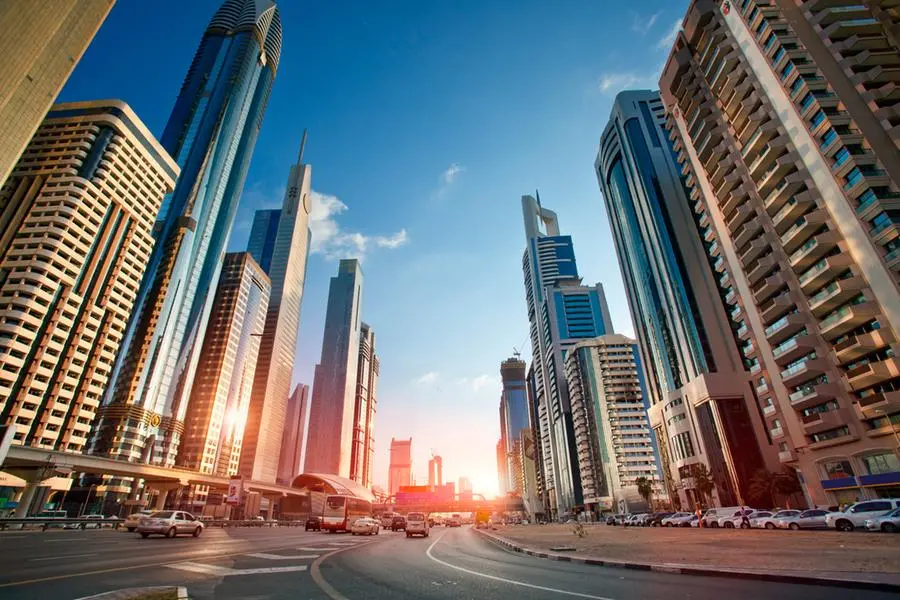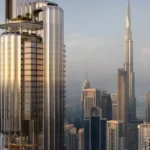Now Reading: Dubai High-Speed Rail Sparks Real Estate Boom
-
01
Dubai High-Speed Rail Sparks Real Estate Boom
Dubai High-Speed Rail Sparks Real Estate Boom

Dubai High-Speed Rail Real Estate is now one of the most talked-about topics in the UAE property market. With the upcoming high-speed rail project connecting Dubai to Abu Dhabi, the region’s real estate dynamics are shifting in remarkable ways. Investors, developers, and homebuyers are all keeping their eyes on this groundbreaking development, and for good reason: faster connectivity is about to change everything.
The High-Speed Rail Project: A Game-Changer for Dubai
The long-awaited high-speed rail network is one of the largest infrastructure projects ever undertaken in the UAE. Designed to connect Dubai and Abu Dhabi in under 50 minutes, it is set to reshape how people live, work, and invest. For decades, commuters and residents have relied heavily on highways, with traffic between the two emirates often causing delays and frustration. The new rail link promises seamless, efficient, and sustainable transport.
But beyond convenience, the ripple effect is already being felt in real estate. Areas once considered too far from Dubai’s central business districts are suddenly hot spots for investors.
Why Transport Shapes Property Demand
Real estate trends worldwide show that major transport projects often redefine property values. From London’s Crossrail to Tokyo’s bullet trains, efficient connectivity consistently boosts demand in surrounding areas. Dubai High-Speed Rail Real Estate is no exception.
By reducing travel times between the two powerhouses of Dubai and Abu Dhabi, the rail project makes it possible for professionals to live in one city while working in another. This flexibility is driving up interest in communities near the rail stations, as buyers and tenants anticipate both lifestyle and financial benefits.
Hotspots Emerging Near the Dubai Rail Line
Several locations are expected to see a surge in demand thanks to the new high-speed rail. These include:
- Dubai South: Already home to Expo City Dubai and Al Maktoum International Airport, this area is set to become a prime real estate hub once the rail station opens nearby.
- Jebel Ali: Known for its industrial and logistics significance, Jebel Ali’s residential projects are gaining attention as connectivity improves.
- Downtown Dubai & Business Bay: As the city’s heart, these areas will benefit from easier access to Abu Dhabi’s workforce, boosting demand for luxury and mid-range properties.
- Abu Dhabi Suburbs: Communities close to the Abu Dhabi station will also experience increased housing demand, especially from Dubai-based workers seeking lower property prices.
Impact on Residential Real Estate
For homeowners and renters, Dubai High-Speed Rail Real Estate offers an exciting opportunity. Properties near planned rail stations are expected to appreciate faster than the citywide average. Tenants, on the other hand, will benefit from more options, as areas that once felt remote suddenly become viable.
Families may also find this connectivity appealing. Parents working in Abu Dhabi could comfortably live in Dubai, close to top schools and amenities, without long commutes.
A Boost for Commercial Real Estate
The impact is not limited to housing. Commercial properties are also set to benefit from the rail link. Office spaces in Dubai could attract Abu Dhabi-based firms seeking easier access to clients. Meanwhile, retail outlets near the stations will enjoy increased foot traffic from daily commuters.
The project is also expected to encourage multinational corporations to expand operations across both emirates, knowing that employee movement will be smoother than ever.
Sustainability and Modern Urban Planning

Beyond property values, Dubai High-Speed Rail Real Estate is tied to the UAE’s broader vision of sustainability. The rail system will significantly cut carbon emissions compared to highway traffic, supporting the nation’s green goals. Developers are already aligning projects with eco-friendly designs, anticipating future buyer preferences.
This combination of smart urban planning and modern infrastructure is attracting global investors, especially those focused on sustainable developments.
The Investor’s Angle: Why Now Is the Time
For property investors, timing is everything. Buying before major infrastructure projects are completed often yields the highest returns. Investors who purchase properties near rail-linked areas now are likely to benefit from rapid appreciation once the line opens.
Rental yields are also projected to climb, as demand for well-located homes rises. International buyers, in particular, are paying attention, drawn not only by Dubai’s tax-friendly environment but also by the promise of future growth tied to the rail.
Challenges to Watch
While the excitement is undeniable, investors and buyers should remain aware of potential challenges:
- Project Timelines: Large infrastructure projects sometimes face delays. Investors should plan for flexibility.
- Price Overheating: Areas near the rail line could see speculative buying, leading to short-term price spikes.
- Market Correction Risks: Like any booming market, rapid growth could be followed by stabilization periods.
That said, Dubai’s strong governance, investor-friendly policies, and commitment to infrastructure excellence offer reassurance.
Comparing Dubai with Global Rail-Inspired Booms
Dubai is not the first city to see real estate transformed by rail. Similar stories can be found worldwide:
- London Crossrail (Elizabeth Line): Property values along the new stations jumped up to 25% even before full completion.
- Tokyo Shinkansen: High-speed rail expanded residential choices for millions, leading to new satellite cities.
- Shanghai Maglev: Areas near the high-speed rail hubs became thriving commercial and residential districts.
Dubai High-Speed Rail Real Estate is poised to mirror these successes, with the added advantage of being part of a master-planned, globally connected city.
The Bigger Picture: Uniting Two Powerhouse Cities
Perhaps the most important outcome of this rail project is the way it ties together Dubai and Abu Dhabi. While each emirate has its unique strengths, their combined force will create an economic corridor unlike any other in the Middle East.
Dubai’s reputation as a global hub for tourism, trade, and finance will complement Abu Dhabi’s strengths in energy, culture, and industry. The high-speed rail ensures that distance is no longer a barrier, allowing the real estate market in both cities to thrive in unison.
Conclusion: A Future Built on Speed and Opportunity
Dubai High-Speed Rail Real Estate is more than a trend—it’s a future-defining movement. As the rail line between Dubai and Abu Dhabi progresses, property investors, homeowners, and businesses are positioning themselves for unprecedented growth.
With faster travel, sustainable development, and new urban centers emerging, the UAE real estate landscape is on the brink of a historic transformation. For anyone considering property investment in the region, now is the time to act.
Do follow us : Instagram
Read More-Dubai Real Estate Deals Hit Record $117B in H1 2025



















